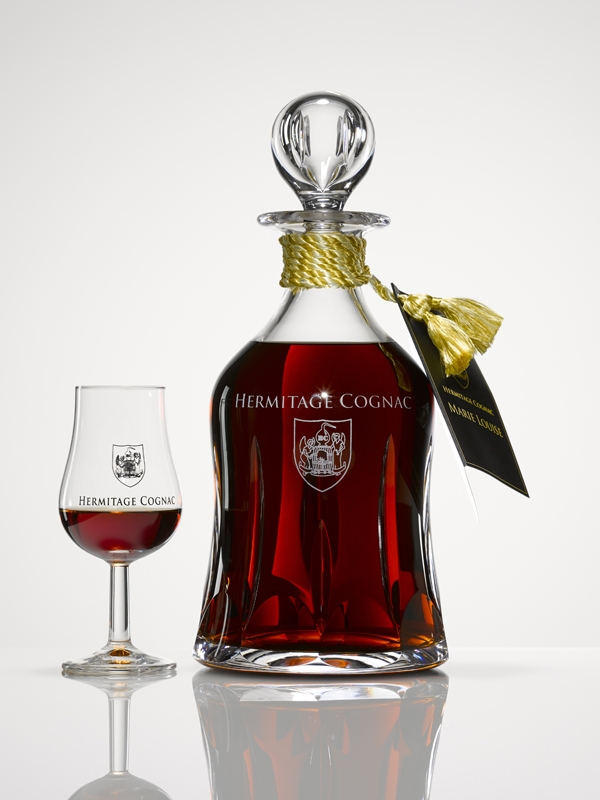There are many producers of cognac in the legal production area of France known as The Charentes and Charentes Maritime. Each one of them, quite naturally, believes that their cognacs are the best. The truth, however, is rather different. Producers don’t advertise their presence so most have probably only ever tasted different cognacs in bars and restaurants. Indeed, I have spoken to some producers who didn’t even know that they had a distillery next door. This lack of local industry awareness has, over the years, resulted in the development of our own cognac quality control.
There are of course standards to which all cognac houses must rigidly adhere. Variations in the product occur naturally with changes in the terroir, vines, distillation, cellars etc. These changes can dramatically change the quality of each cognac. As a rule, the higher the cru, the better the cognac, but one cannot rely on this as a guarantee of quality.
As negoçiants we try to limit the cognacs we buy to those produced in the top cru, Grande Champagne. Here, hundreds of cognacs are produced, and each has a different taste, age, style, colour, method of production, ageing process, strength and balance. On top of that, our customers have varying tastes and needs and we try to accommodate them all. Finding the right cognacs is objective since we have our own cognac quality control standards which we have developed over the years. These standards are not necessarily subjective however, since more than a third of all our cognacs have won gold medals or above in cognac competition.
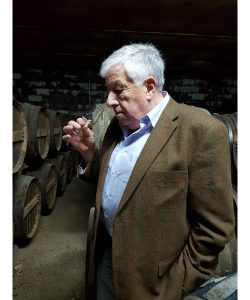 Making sure that our customers really do get the best means that, after we have decided on a potential cognac, we still need to do several tests. The first is of course tasting. It is difficult to say how many cognacs we taste but on some days, it may be twenty or even thirty, others, maybe only one or two. One tends to gather considerable experience when tasting many different cognacs. Then we check the cognac for balance which means balancing the fieriness against flavour. Sometimes we need to reduce the cognac slightly which in some cases take quite a long time. We also check it for sediment as some distillers don’t filter their cognacs before we receive them at our bottling plant. The alcohol level is also tested as legally, this must be quoted on the label. This process also involves checking the level of obscuration (factors which mask the true alcohol content). There is always some natural obscuration which cannot be avoided but in modern blends, the addition of sugar and caramel increases the level considerably.
Making sure that our customers really do get the best means that, after we have decided on a potential cognac, we still need to do several tests. The first is of course tasting. It is difficult to say how many cognacs we taste but on some days, it may be twenty or even thirty, others, maybe only one or two. One tends to gather considerable experience when tasting many different cognacs. Then we check the cognac for balance which means balancing the fieriness against flavour. Sometimes we need to reduce the cognac slightly which in some cases take quite a long time. We also check it for sediment as some distillers don’t filter their cognacs before we receive them at our bottling plant. The alcohol level is also tested as legally, this must be quoted on the label. This process also involves checking the level of obscuration (factors which mask the true alcohol content). There is always some natural obscuration which cannot be avoided but in modern blends, the addition of sugar and caramel increases the level considerably.
We really do try hard to provide our customers with the very best and we are proud of our collection of Hermitage Cognacs. Being a small, artisan producer is a huge benefit to everybody. If we were big, we would have to blend to supply cognacs with more commercial affordability. Each cognac would lose its individuality and we would probably have to rely on younger cognacs to produce the required quantity. We know Hermitage is always the best cognac available for our customers’ needs but it can be difficult to easily communicate that with every bottle we sell.
 Brandy, or perhaps to be more precise, cognac, has become the official tipple of Christmas in most of Europe since the early 19th century. Perhaps it is worth noting that of all the European countries to take it on board, Britain has taken more of the sublime liquid than any other. The Irish too have championed various brandies, Richard Hennessy being the most renowned purveyor.
Brandy, or perhaps to be more precise, cognac, has become the official tipple of Christmas in most of Europe since the early 19th century. Perhaps it is worth noting that of all the European countries to take it on board, Britain has taken more of the sublime liquid than any other. The Irish too have championed various brandies, Richard Hennessy being the most renowned purveyor.
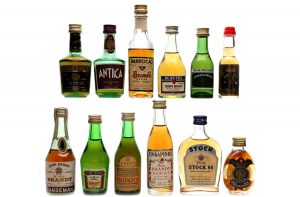 Well,
Well, 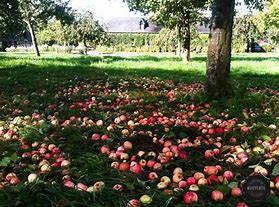
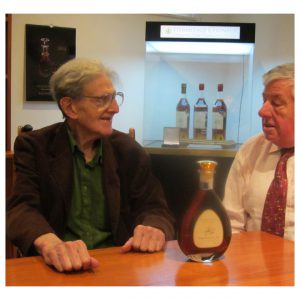 It would be difficult for me to write another
It would be difficult for me to write another 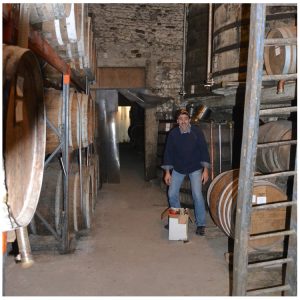
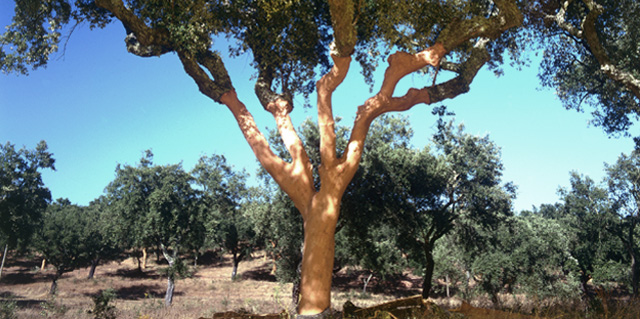

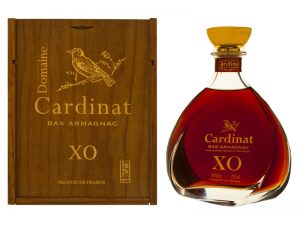 The Bureau National Interprofessionnel de l’Armagnac (BNIA) has increased the minimum age requirement for
The Bureau National Interprofessionnel de l’Armagnac (BNIA) has increased the minimum age requirement for 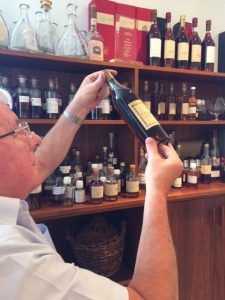 We often have requests to do a Brandy Bottle Valuation and whilst sometimes a bottle can have a high value, most brandy valuations will disappoint most people.
We often have requests to do a Brandy Bottle Valuation and whilst sometimes a bottle can have a high value, most brandy valuations will disappoint most people.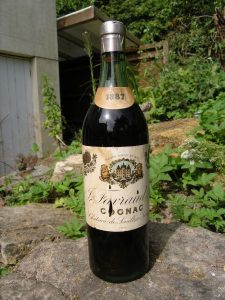
 Making sure that our customers really do get the best means that, after we have decided on a potential cognac, we still need to do several tests. The first is of course tasting. It is difficult to say how many cognacs we taste but on some days, it may be twenty or even thirty, others, maybe only one or two. One tends to gather considerable experience when tasting many different cognacs. Then we check the cognac for balance which means balancing the fieriness against flavour. Sometimes we need to reduce the cognac slightly which in some cases take quite a long time. We also check it for sediment as some distillers don’t filter their cognacs before we receive them at our bottling plant. The alcohol level is also tested as legally, this must be quoted on the label. This process also involves checking the level of obscuration (factors which mask the true alcohol content). There is always some natural obscuration which cannot be avoided but in modern blends, the addition of sugar and caramel increases the level considerably.
Making sure that our customers really do get the best means that, after we have decided on a potential cognac, we still need to do several tests. The first is of course tasting. It is difficult to say how many cognacs we taste but on some days, it may be twenty or even thirty, others, maybe only one or two. One tends to gather considerable experience when tasting many different cognacs. Then we check the cognac for balance which means balancing the fieriness against flavour. Sometimes we need to reduce the cognac slightly which in some cases take quite a long time. We also check it for sediment as some distillers don’t filter their cognacs before we receive them at our bottling plant. The alcohol level is also tested as legally, this must be quoted on the label. This process also involves checking the level of obscuration (factors which mask the true alcohol content). There is always some natural obscuration which cannot be avoided but in modern blends, the addition of sugar and caramel increases the level considerably.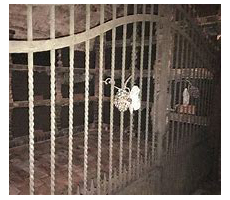 Not every cognac house has a Paradis – a designated area in the innermost recess of their cellar – but those that exist are steeped in history. Back in the early eighties, having discovered a cognac which I really liked, I went to the Charente to try and discover its origin. I ended up in Cognac’s twin town, Jarnac, standing in front of an elegant wrought iron gate with an imposing key. Behind it were about 100 very dusty bonbonnes, each with a chalk board describing what was in them. What an eye opener – they contained cognacs which dated from as early as 1805. Each bonbonne (a sort of demijohn in a basket), contained about 30 litres of prized spirits and was sealed with wax to maintain its superior qualities.
Not every cognac house has a Paradis – a designated area in the innermost recess of their cellar – but those that exist are steeped in history. Back in the early eighties, having discovered a cognac which I really liked, I went to the Charente to try and discover its origin. I ended up in Cognac’s twin town, Jarnac, standing in front of an elegant wrought iron gate with an imposing key. Behind it were about 100 very dusty bonbonnes, each with a chalk board describing what was in them. What an eye opener – they contained cognacs which dated from as early as 1805. Each bonbonne (a sort of demijohn in a basket), contained about 30 litres of prized spirits and was sealed with wax to maintain its superior qualities.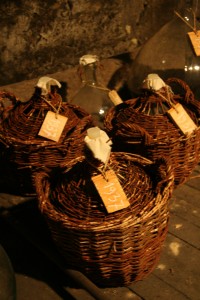 Many cognac families select a few of their finest cognacs for storage in the Paradis. The point when a cognac has gained all the benefit it can from the wood depends on many factors but ultimately, it is when the cellar master decides that it has reached its optimum quality. At this stage the cognac is put into glass bonbonnes and sealed so that the generations of gentle maturation in the barrel are preserved. A cognac that has lasted in oak without deterioration for perhaps 60, 70, 80 or even 90 years is going to be good, very good and will have developed the much sought after
Many cognac families select a few of their finest cognacs for storage in the Paradis. The point when a cognac has gained all the benefit it can from the wood depends on many factors but ultimately, it is when the cellar master decides that it has reached its optimum quality. At this stage the cognac is put into glass bonbonnes and sealed so that the generations of gentle maturation in the barrel are preserved. A cognac that has lasted in oak without deterioration for perhaps 60, 70, 80 or even 90 years is going to be good, very good and will have developed the much sought after 